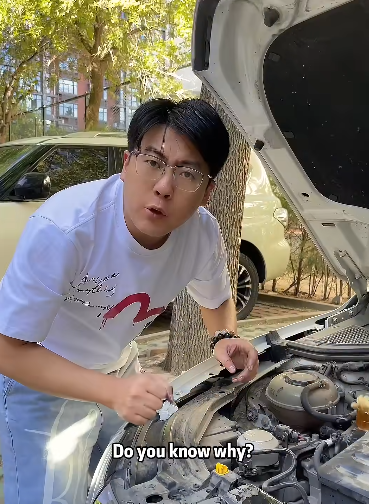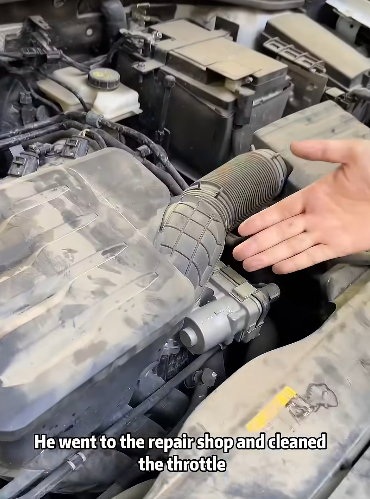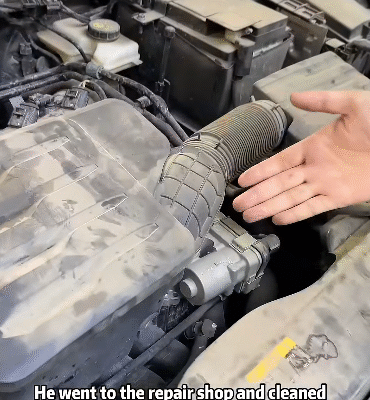
Car engine vibration can be more than just a minor annoyance — it can be a warning sign of mechanical problems that may affect your vehicle’s performance, safety, and longevity. Understanding what causes engine vibration and how to eliminate it is crucial for any car owner who wants a smooth and reliable driving experience.
In this article, we will explore the common causes of engine vibration and provide practical, step-by-step solutions on how to get rid of it effectively.
What Causes Engine Vibration?
Engine vibrations are caused when one or more components in the engine or drivetrain are not balanced, misaligned, or failing. These vibrations may vary in intensity and frequency, and often change with engine speed (RPM).
Common causes include:
- Worn or Damaged Engine Mounts
Engine mounts secure the engine to the car’s frame and absorb vibrations. Over time, they can wear out, crack, or break, leading to increased vibration felt inside the cabin. - Imbalanced or Damaged Engine Components
Parts such as the crankshaft, pistons, and flywheel must be precisely balanced. If any of these components become damaged or worn, imbalance causes vibrations. - Misfiring Engine Cylinders
When one or more cylinders don’t fire properly due to bad spark plugs, fuel delivery issues, or ignition problems, the engine runs unevenly and vibrates. - Faulty or Dirty Fuel Injectors
Uneven fuel distribution leads to rough idling and vibration. - Problems with the Drive Shaft or Transmission
Issues here can transmit vibrations to the engine or chassis. - Worn Spark Plugs or Ignition Components
Faulty ignition components cause incomplete combustion cycles, resulting in vibration. - Unbalanced or Damaged Tires and Wheels
Although not engine-related, wheel imbalance often causes vibrations felt during driving, especially at certain speeds. - Exhaust System Issues
Loose or damaged exhaust mounts and pipes can transmit vibrations.

Signs You Have Engine Vibration
- Shaking or rattling feeling through the steering wheel or seats
- Unusual noises when the engine is running
- Visible engine movement when idling
- Decreased performance or rough idling
- Warning lights on the dashboard
Step-by-Step Guide: How to Eliminate Engine Vibration
1. Inspect and Replace Engine Mounts
Since engine mounts are designed to absorb and dampen engine vibrations, worn mounts are a primary cause of excessive vibration.
How to check:
- Open the hood and observe the engine while it is idling. Look for excessive engine movement or shaking.
- Physically inspect mounts for cracks, splits, or broken rubber.
Fix:
- Replace damaged or worn mounts. This is typically a straightforward repair and can drastically reduce engine vibration.
2. Tune-Up the Engine
An engine tune-up can help identify and fix ignition and fuel system problems.
What to do:
- Replace spark plugs and spark plug wires. Old or fouled plugs cause misfires that lead to vibration.
- Clean or replace fuel injectors.
- Check and replace the air filter. A clogged filter can cause uneven fuel-air mixture.
- Inspect ignition coils and distributor cap for damage.
Result:
A well-tuned engine runs smoother and with less vibration.

3. Balance and Align Wheels and Tires
Although this is not engine-specific, vibrations often stem from tire and wheel issues and can be mistaken for engine vibration.
How to check:
- If vibrations increase with speed and are felt mostly through the steering wheel, have the wheels balanced.
- Inspect tires for uneven wear or damage.
Fix:
- Get professional wheel balancing and alignment.
- Replace damaged or worn tires.
4. Check the Drive Shaft and Transmission
If your vehicle is rear-wheel or four-wheel drive, vibrations can come from the drive shaft or transmission.
How to check:
- Listen for unusual noises or feel for vibration when accelerating.
- Inspect the drive shaft for dents, bends, or loose U-joints.
Fix:
- Replace or repair damaged drive shaft components.
- Ensure transmission fluid is at proper level and replace if dirty.
5. Inspect Exhaust System
Loose or broken exhaust parts can cause vibrations that resonate through the car.
How to check:
- Look under the vehicle for loose exhaust hangers or pipes.
- Listen for rattling noises.
Fix:
- Tighten or replace loose mounts.
- Repair or replace damaged exhaust components.
6. Check for Internal Engine Issues
If simple fixes don’t eliminate the vibration, more serious internal engine issues could be to blame.
Common problems:
- Bent or damaged crankshaft
- Worn piston rings or cylinders
- Damaged flywheel or harmonic balancer
These issues require professional diagnosis and repair, often involving engine disassembly.

Preventive Maintenance Tips to Avoid Engine Vibration
- Regularly inspect engine mounts and replace as needed.
- Keep up with scheduled tune-ups including spark plug replacement and fuel system cleaning.
- Maintain tires by balancing and rotating them regularly.
- Use quality fuel and engine oil to avoid build-up and wear.
- Monitor and fix engine warning lights promptly.
- Address unusual noises or performance changes immediately.
When to See a Mechanic
While many vibration issues can be diagnosed and fixed at home, some require professional tools and expertise:
- Persistent engine misfires despite tune-ups
- Internal engine component damage
- Transmission or drivetrain problems
- Complex electrical or fuel injection system faults
A mechanic can perform diagnostics like engine compression tests, computerized scans, and road tests to pinpoint the exact cause.
Summary
Engine vibration can originate from a variety of causes ranging from simple to complex. The key to eliminating it is a systematic approach:
- Start by checking engine mounts and replace if worn.
- Perform engine tune-ups including spark plugs and fuel injectors.
- Inspect and balance tires and wheels.
- Examine drivetrain and exhaust components.
- Consider professional diagnosis for internal engine issues.
By addressing these areas, you can enjoy a smoother, quieter ride, extend your vehicle’s life, and prevent costly repairs.



